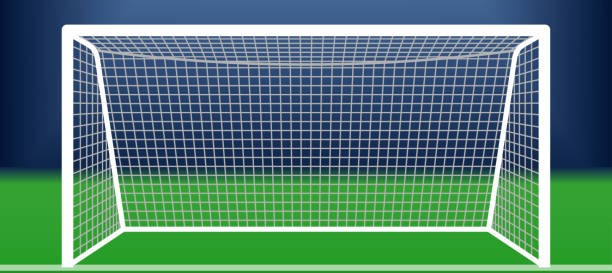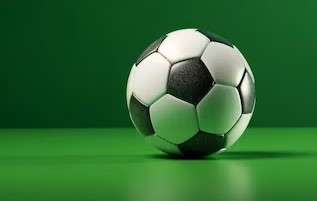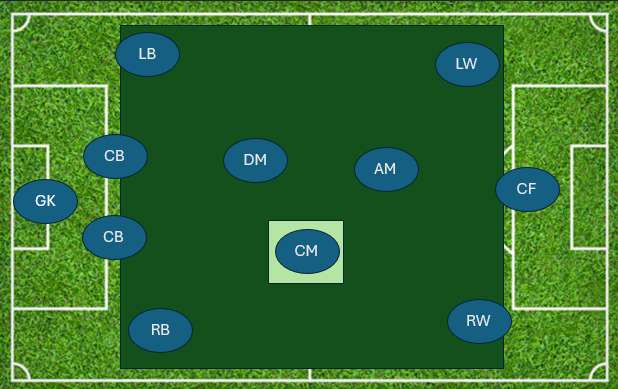













THE CENTRAL MIDFIELDER.

The central midfielder (CM) is a vital position in football, often acting as the engine of the team.
Positioned centrally between the defense and attack, central midfielders play a crucial role in linking both
phases of the game. Here’s a detailed overview of the central midfielder’s responsibilities and attributes:
Positioning:
- ▫ CENTRAL AREA OF THE FIELD: Central midfielders operate in the middle of the pitch, allowing them to
influence both defensive and offensive plays effectively.
- ▫ FLEXIBLE ROLES: They can play deeper as defensive midfielders (holding midfielders) or advance into attacking positions,
depending on the team’s formation and tactical approach.
Primary Role: Linking Play:
- ▫ BALL DISTRIBUTION: Central midfielders are responsible for receiving the ball from defenders and distributing it to wingers, forwards, or other
midfielders, facilitating ball movement and maintaining possession.
- ▫ TRANSITIONING PLAY: They play a key role in transitioning the team from defense to attack, quickly moving the ball forward when the opportunity
arises.
- ▫ CREATING OPPORTUNITIES: Central midfielders often make key passes to unlock defenses, helping to create goal-scoring chances.
Defensive Responsibilities:
- ▫ BALL RECOVERY: Central midfielders are tasked with intercepting passes and recovering possession. They often press opponents
to win the ball back.
- ▫ COVERING DEFENSIVE GAPS: They help shield the defense by covering spaces and supporting the backline during defensive phases.
- ▫ TACKLING: Effective tackling and positioning are essential for disrupting the opponent's play and regaining control of the ball.
Offensive Responsibilities:
- ▫ SUPPORT FOR ATTACK: Central midfielders make forward runs to support attackers, providing additional options in the final third.
- ▫ SET PIECES: They may take direct free kicks, corners, or other set pieces, using their vision and precision to create scoring
opportunities.
Tactical Variations:
- ▫ FORMATION INFLUENCE: The role can vary depending on the formation
- ▫ IN A 4-4-2, central midfielders often work together in a flat midfield, balancing defensive duties and attacking support.
- ▫ IN A 4-3-3, one or two central midfielders may play deeper (defensive midfielders), while the other focuses on attacking play.
- ▫ BOX-TO-BOX MIDFIELDER: Some central midfielders are known as box-to-box midfielders, who contribute significantly to both attack
and defense, making runs into the opponent’s box and recovering defensively.
Skills and Attributes:
- ▫ PASSING ABILITY: Strong passing skills are essential for distributing the ball accurately and maintaining possession.
- ▫ VISION: Central midfielders must read the game well, anticipating movements and identifying passing opportunities.
- ▫ STAMINA AND WORK RATE: They cover a lot of ground, requiring high stamina to support both defensive and offensive plays throughout
the match.
- ▫ TACTICAL AWARENESS: A strong understanding of positioning and tactical dynamics is crucial for effective play in both phases.
- ▫ BALL CONTROL: Good ball control and dribbling skills help central midfielders maintain possession under pressure.
Summary: Central midfielders are essential to a football team, serving as the link between defense and attack. They require a
diverse skill set, including passing, vision, stamina, and tactical awareness, to effectively control the game and support their
teammates. Their ability to transition play and maintain possession makes them integral to a team's success on the pitch.




























